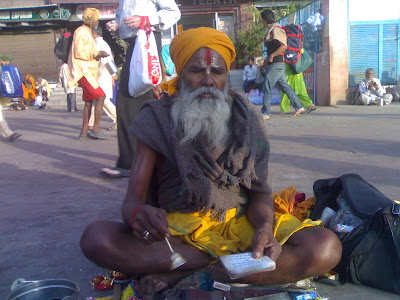There was still a bit of chill in the April air as the first rays of the sun reflected upon the rushing waves of the River Ganga. A crowd had already built up on either side of the ghats (banks) of the sacred river at Haridwar even at that early hour. Some had already started their ritualistic bath. A holy dip at the Ganga is said to wash away one's sins to attain Moksha – freedom from the cycle of repeated death and rebirth.
Haridwar, which means the 'Gateway to God', witnesses a surge of devotees, pilgrims and tourists from all over the world during the Kumbh Mela. This is the largest gathering of people for a religious purpose in the world. Millions gather for this auspicious Hindu event.
But my visit to Haridwar was neither to celebrate the Kumbh Mela, which is being held after 12 years in this small Uttarakhand town from January 14 to April 28, and nor as a tourist. It was for a special purpose for someone sacred to me. I got lost amongst the ever swelling riots of colourful crowd as the ripples of the Ganga seemed to sing an eternal song of life and death.
The site of the Kumbh festival revolves between four locations on four sacred rivers and is celebrated four times every 12 years – at Haridwar on the Ganges, at Allahabad on the confluence of the Ganges, Yamuna and the mythical River Saraswati, at Ujjain on the Shipra, and at Nasik on the Godavari.
The fair also witnesses one of the largest convergence of sadhus (mystics or wandering monks). The attraction among them is the ash-smeared Naga sadhus – who renounce everything materialistic. It is a spectacle to see thousands of naked Naga sadhus march through the town before taking a dip in the Ganga on the occasion of the first Shahi Snan (royal bath) of the Kumbh on Maha Shivratri (the day that marks the marriage between Lord Shiva and Goddess Parvati).
Commercially, Kumbh Mela is also a great opportunity for ‘green-seeking squeegees’. Hotels rates in the town can even put the Himalayan heights to shame, especially the ones along the ghats. There are endless rows of shops selling anything from flowers to the latest Cartoon Network merchandise. Interestingly, I noticed a number of shops selling pitchers, apart various other brass and copper items. The reason, which I later discovered, was that Kumbh is a Sanskrit word for pitcher. And mela means fair. I got the picture.

The many small bridges over the Ganga not only connect the ghats but also the many alms seekers and advertisers with the thousands that traverse to either side of the river. Haridwar is a place to connect – with god, spirituality, inner-self, life, death, people, target audience, religion, history, nature...the list is endless.
And there are the many babas ('holy men' and yogis) being sought after, some internationally renowned with large followers base. With the number of gargantuan hoardings of 'holy men' that greets you as you approach Haridwar, it’s easy to figure out why it is known as the land of babas. The stretch is an OOH advertising maze.
I marvelled at the sight of humanity immersed in an ocean of spiritualism, questism and commercialism, wishing I had a proper camera to capture it instead of my cellphone. Next time is too long a time. I left leaving the Ganges to sing the last lullaby for a benevolent soul.
(Naga sadhus photo: Courtesy Kumbh Mela official website)










